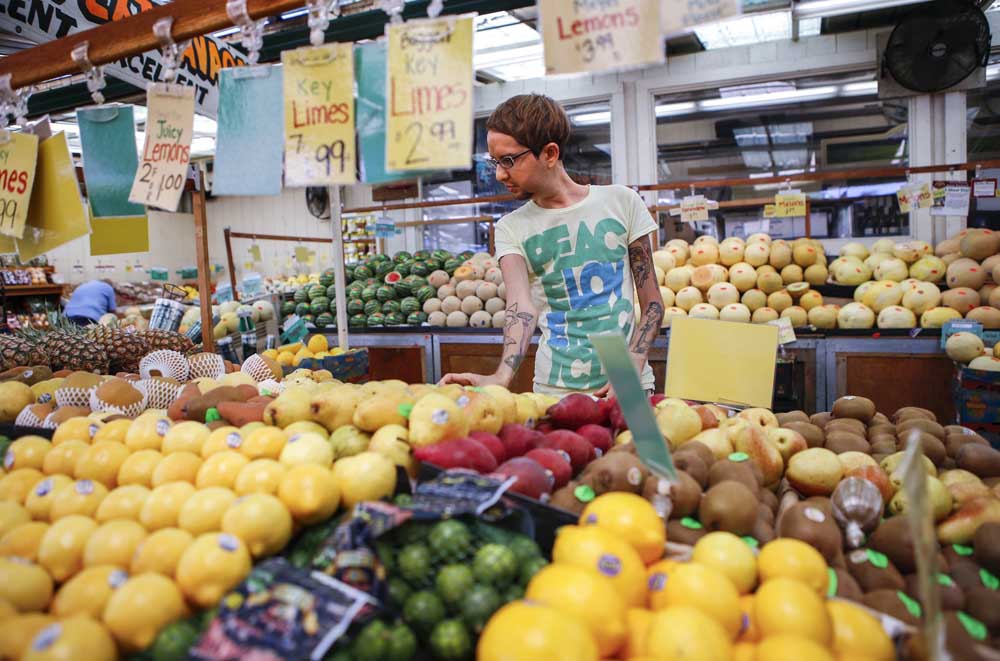When ‘pure’ eating becomes an unhealthy obsession
Published 12:00 am Thursday, September 11, 2014

- John Green / Bay Area News GroupJohnny Righini is in recovery for what eating disorder experts call orthorexia, an obsession with healthy eating that can be physically and mentaly debilitating.
CONTRA COSTA, Calif. — During a recent trip to the Half Moon Bay, California, farmers market, Johnny Righini didn’t suffer a panic attack or chastise his mother when she bought nonorganic produce. For Righini, this moment of self-restraint marked another small victory in his struggle to overcome a pathological obsession with eating “pure” foods.
Starting in his early 20s, Righini dedicated himself to vegan and raw food diets, thinking they offered a healthy way to recover from years of anorexia and bulimia. But he took those restrictive diets to extremes, agonizing, for example, over fruits and vegetables losing their “life force” each minute after being picked.
He now says his “twisted thinking” was a symptom of orthorexia, an eating disorder that is increasingly on the radar of health professionals.
Righini didn’t obsess over calorie counts, as he did with anorexia. He pored over ingredient labels — then rejected food with labels as being too “impure.” He found it impossible to eat out at restaurants or other people’s homes or to be around people eating fast food. He even tossed out food his mother brought home from a supermarket.
Too much of a good thing
Eating disorder experts say there is nothing wrong with wanting to eat nutritiously or to eliminate certain foods. But healthy eating becomes harmful when people’s thinking or behavior becomes so “extremely rigid” they jeopardize their physical and mental health and relationships with other people, said Jennifer Lombardi, executive director of the Eating Recovery Center in Sacramento.
“Any diet or dietary restriction that causes a person to be unable to celebrate and socialize with food comfortably is going too far,” agreed Leah Hopkins, a clinical dietitian at the Monarch Cove Eating Disorder Treatment Center in Pacific Grove, California.
It’s not surprising that people fervently latch onto health food trends, especially here in Northern California, where a foodie culture equates wholesome eating with a happy life and disparages ingredients that are not organic, natural or locally produced.
Orthorexia became a hot social media topic this spring when Jordan Younger, the Blonde Vegan blogger, startled her 70,000 Instagram followers with news that she had the eating disorder. She said she cut out options that even fell under the vegan umbrella because they were “not 100 percent clean or 100 percent raw,” she told People magazine. “I was following thousands of rules in my head that were making me sick.”
Orthorexia, unlike the more well-studied disorders of anorexia and bulimia, has not made its way into the Diagnostic and Statistical Manual of Mental Disorders, Fifth Edition, the universal authority for psychiatric diagnoses.
Breaking down the condition
The working definition comes from San Francisco physician Steven Bratman. In a 1997 Yoga Journal essay and subsequent book, “Health Food Junkies,” he recounted his “health food addiction,” which he called orthorexia, using the Greek word “ortho” meaning “straight, correct or true.”
Bratman, who declined to be interviewed for this story because the disorder is no longer part of his practice, wrote that his orthorexia began in the 1970s when he was a “dedicated” vegetarian living and cooking at an organic food commune. Self-denial and “pure” choices made him feel “clear-headed, strong and self-righteous.” Like Righini, he developed an aversion to produce that hadn’t just been picked and lectured friends and family about the evils of refined, processed food and the dangers of pesticides and artificial fertilizers. “My ability to carry on normal conversations was hindered by intrusive thoughts of food,” he wrote. “The need to obtain meals free of meat, fat and artificial chemicals had put nearly all social forms of eating beyond my reach. I was lonely and obsessed.”
Experts say orthorexia becomes life-threatening when people’s food restrictions make it impossible for them to take in enough calories and nutrients to maintain good health. Bell recently treated a 14-year-old girl who ate only raw fruits and vegetables. She dropped to 80 pounds and had to be hospitalized for an irregular heartbeat.
One side effect of malnutrition is a “starved brain,” which further distorts thinking and self-awareness, Bell said. It doesn’t help matters that orthorexics grasp at any piece of news from a new study or social media post, even from acclaimed physicians and best-selling authors, telling them what’s “good food, what’s bad food, what’s safe and not safe,” said Dr. Christine Pappas of the Eating Recovery Center’s clinic in Corte Madera, California.
And even if there is truth to these scientific observations, an orthorexic will selectively choose data that justify decisions about what not to eat, she said.
Righini, who had previously been hospitalized for anorexia, isn’t currently in any formal program, but attends support groups for people with eating disorders. He still adheres to a vegan and raw foods diet out of belief that it’s the best way to nourish his body.
He’s aware that some people think he’s still being too restrictive, but for Righini the orthorexia was never about a particular diet, but about his “mind set” toward food. He has increased his daily intake to 3,000 to 4,000 calories and is gaining weight to reach his 115-pound goal.
“I now put love and positive energy into the food I grow or buy, prepare and consume,” he said. “My diet and health are more stable because my mind is more stable.”






